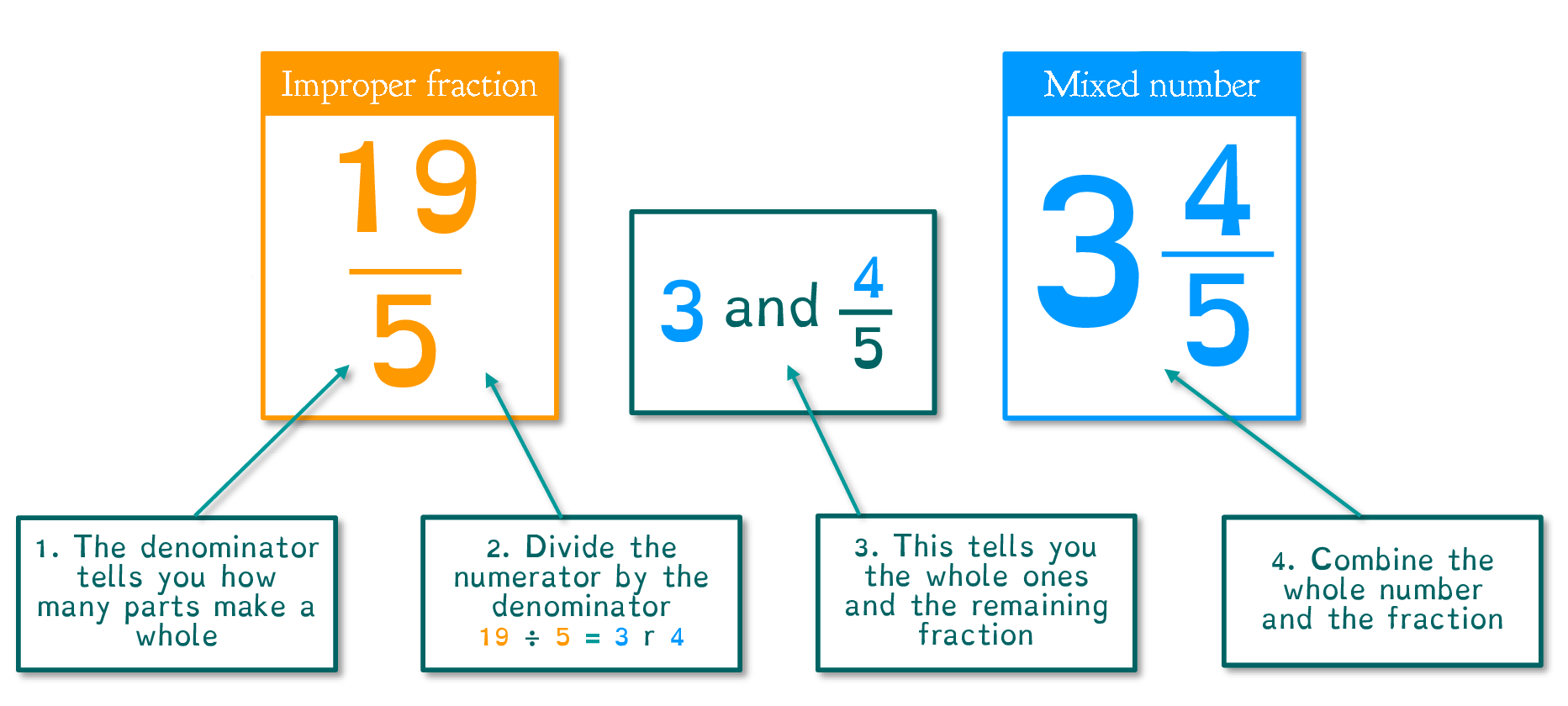



Fractions
Fractions are numbers that represent parts of a whole.
Fractions have two parts the numerator and the denominator. The numerator is the number that is on the top of the line and represents how many parts are taken from the whole. The denominator is the number underneath the line and represents the total amount of equal parts in the whole.
Unit Fractions: Fractions with a numerator of 1.

Proper Fractions: Fractions in which the numerator is less than the denominator.

Improper fractions: Fractions in which the numerator is more than or equal to the denominator

Mixed fractions: Mixed fractions or Mixed Numbers consist of a whole number along with a proper fraction.


When adding or subtracting fractions with common denominators, add or subtract the numerators and use the same denominator.


When adding or subtracting with different denominators, You must first find the least common denominator. find this by writing the multiples of each denominator.
Once you have found the least common denominator multiply each fraction separately by the number you multiplied to get that least common denominator. what you multiplied with the denominator you must also multiply with the numerator. Next step is to add or subtract the fractions.

Adding and subtracting Mixed Numbers
When adding or subtracting mixed numbers with common denominator you must first convert the mixed number to an improper fraction by multiplying the denominator by the whole number and adding the numerator. The denominator will stay the same. Once complete than you can just add or subtract the numerators together and keep the denominator the same. Reduce to lowest terms. Change the improper fraction back to a mixed number by dividing the numerator by the denominator.
 8 1/4
8 1/4
Adding and subtracting mixed fractions with different denominators you follow the first steps of changing the mixed numbers to improper fraction. The problem now is completed just the same way as if you were adding proper fractions with different denominators. You must find the least common denominator. Once you have found the least common denominator multiply each fraction separately by the number you multiplied to get that least common denominator. Next step is to add or subtract the fractions together. reduce number to lowest terms.

The first step when multiplying fractions is to multiply the two numerators. The second step is to multiply the two denominators. Finally, simplify the new fractions.

Short cut to multiplying fractions you can cross cancel numerator with a denominator if they can be divided by a number.
Example: 34x25
in this problem the 2 and the 4 can be divided by two leaving 32x15
This would give you an answer of
310
When dividing fractions it is the same as multiplying the first fraction by the reciprocal of the second fraction.
The first step to dividing fractions is to find the reciprocal of the second fraction. This means you take the second fraction in the problem and change the numerator with denominator. Change the division symbol to multiplication symbol. Next, multiply the two numerators. then the two denominators. simplify the fraction if needed.

When multiplying or dividing Mixed numbers just convert the mixed number to improper fraction and follow the same steps as above. Change the final answer back to a mixed number.

Converting an improper fraction to a mixed number
Divide numerator by denominator. The whole number will be written next to the fraction. The remainder would be the new numerator and the denominator will remain the same as the original problem
18 / 4 4 will go into 18 four times with a remainder of 2.
The answer would be 4 2/4. if the fraction can be simplified you must simplify. so the answer would be 4 1/2

